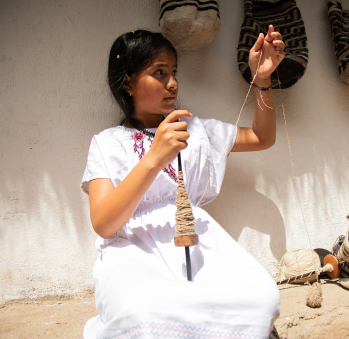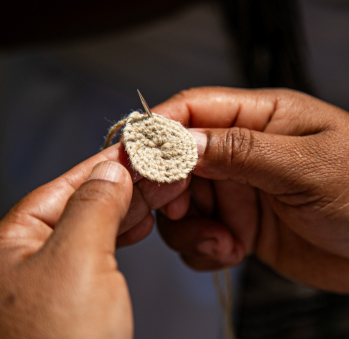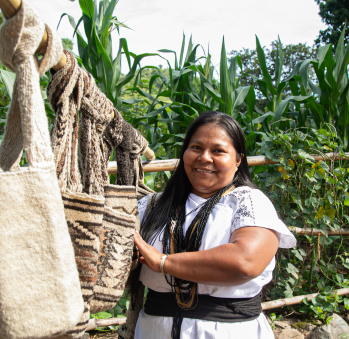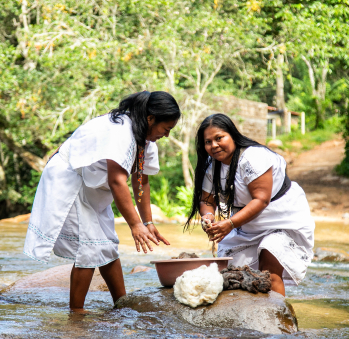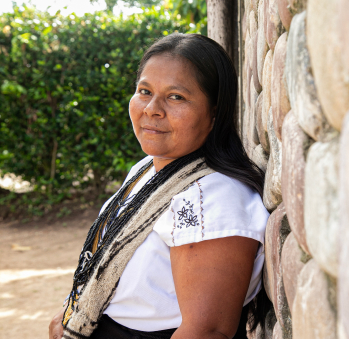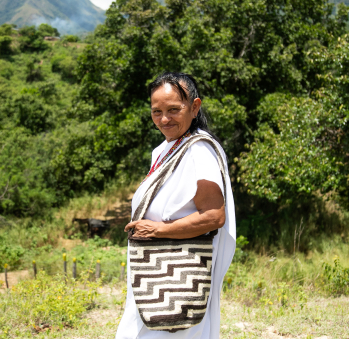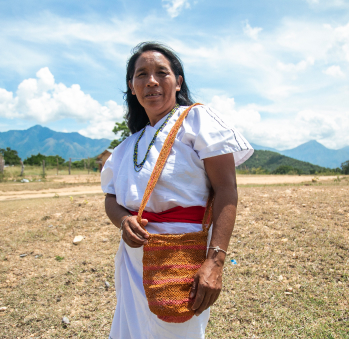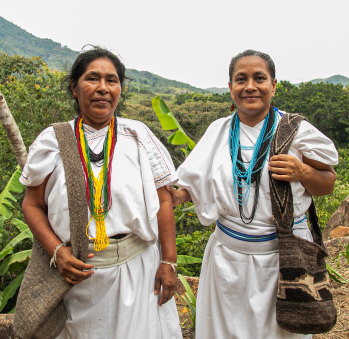Anariakna Mestre Pérez
Workshop: Ati Kwakumuke
Craft: Tejeduría
Trail: Cesar Route
Location: Pueblo Bello, Cesar
Anariakna Mestre is a translator. She bridges the gap between Spanish and her native tongue, Iku’ or Arhuaco, and facilitates the circulation of meaning between both communication systems. Her belly button lies in the village of Santo Domingo, nestled in the Sierra Nevada of Santa Marta. However, thirteen years ago, she relocated to Pueblo Bello, a town on the outskirts of the indigenous reservation of La Sierra. Initially, she had a hard time learning how to communicate in Spanish, assimilating new customs, and learning social norms in her new environment. Today, she stands as a representative of the Arhuaco people within the Ati Kwakumuke Community and works as a translator. This community, known as the House of Independent Government, is committed to the well-being of La Sierra’s people and its surroundings.
Her work as a translator mirrors her skill in weaving wool bags. According to her cultural tradition, weaving is more than just creating textiles: you weave the words and thoughts, and transmit information, one’s own memories and each woman’s thought for which the weave is a medium. Anariakna acquired this craft during her childhood when threads were less delicate and thin than they are today. Her first bag, though imperfect—its center was too wide, its bottom bent and the stitches were uneven— was a heartfelt gift to her grandmother. It was a small bag with a short strap. It was not meant to be worn hanging from one’s shoulder, but to be carried into a bigger bag, hidden, though it featured a design representing the flow of a woman’s thoughts through the drawing of a path and a pattern of squares.
The second time she wove a bag her elders explained to her how to draw a coffee branch on it. This guidance specified the positioning of leaves—one on the upper side of the branch and one underneath it. She transformed this knowledge into an artistic representation featuring two leaves on each side, distinguished by color. When her mother saw the bag, she was amazed that Anariakna had woven it all on her own. The weaving of bags is a tradition that lies in the roots of each woman and the wisdom of her ancestors. Anariakna started weaving without anyone watching, so she could surprise her mother with her designs.
Her skill grew, and she became a prolific weaver with a challenge: to find a balance, just like in the search for the precise word to express an idea in a different language. She even wove a bag with 102 threads, a remarkable feat since bags are usually made from only 20 threads. However, this great achievement left her a headache. Anariakna’s dedication sometimes led to the perception that she was competing with spiders or weaver birds. She got to the point of weaving three bags per month, though the usual amount was one or two. She had a lot of energy, until she got married and, as she recalls, the lazy days arrived with the excitement of love. Her feeling led to the stitches of her bags being so tight that they could be used as a bucket for picking water or as a guacharaca, a percussion instrument which is scratched and produces rattle-like sounds.
Today, her weaving is once again delicate and purposeful. She creates one bag per month, adhering to her grandmother’s wisdom that weaving should not be driven by financial gain, but rather by expressing one’s identity. She emphasizes the importance of understanding that while these bags now hold monetary value, they must retain their cultural significance. Anariakna’s work embodies the mamos’ teachings – the spiritual guides of the Arhuaco people – that weaving must maintain its deep meaning and not become mechanical like a photocopier. Weaving is not wrong —we all think and love— but a woman who weaves must know that each bag should be done while understanding the language and identity of the craft. She must know how to speak the bag’s language.
Anariakna likes repeating. She draws the day and night: the darkness that symbolizes difficult times, and the light that symbolizes clarity and health. Between these two points, life happens. She also likes to draw the joy depicted like entwined fingers, and the spine, which reminds her of her own backbone and the balance she must preserve for her family and herself. The snail, depicted like a hug, kindness and harmony. It is not a costume, though, to depict animals. They live with them and must respect their identity and personal space, an approach that Anariakna herself would appreciate.
As a mother of three, Anariakna’s influence extends to her children. Her daughters embraced weaving from a young age and practice it everyday. Her son, recognizing the artistry in weaving and encouraging balance, learnt how to make his own bags. Anariakna humorously notes that his bags rival hers, reminiscent of her youthful days when love and enthusiasm inspired tight stitches.
Craft


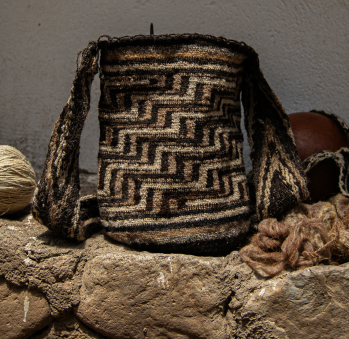

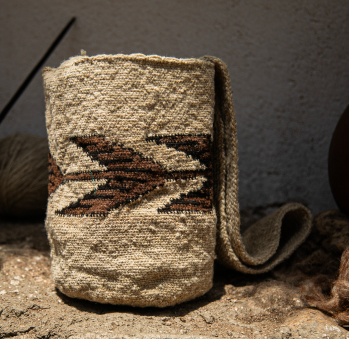
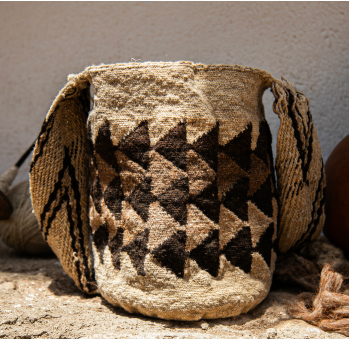

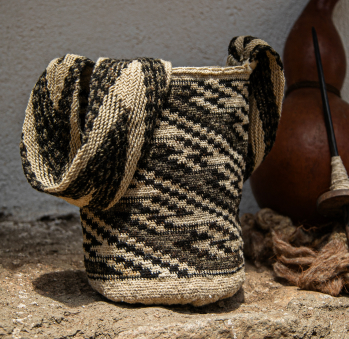
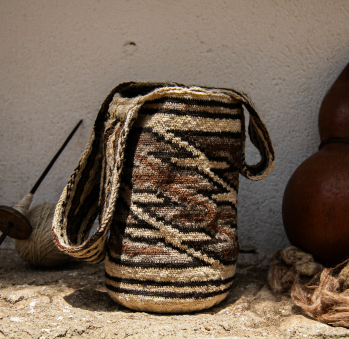
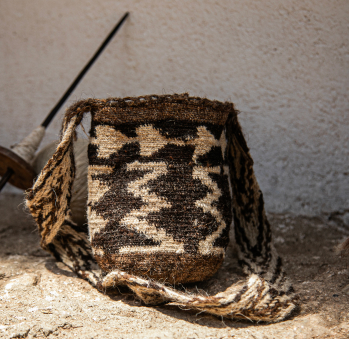
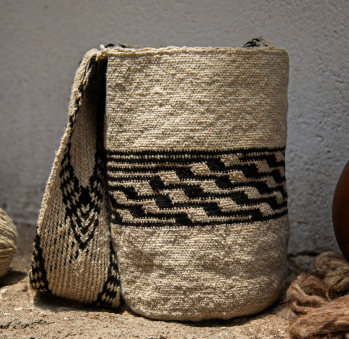











Artisans along the way
Artisans along the way
No puede copiar contenido de esta página









































